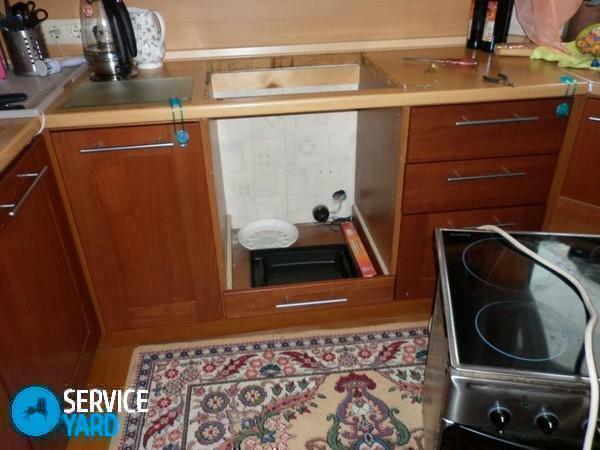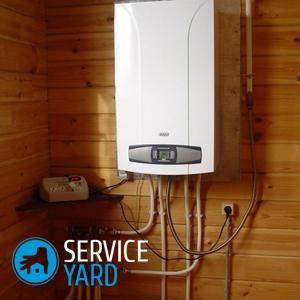For tenants of apartment buildings, particularly old buildings, from year to year, with the onset of the cold season there is the same problem. We are talking about the quality of domestic heating. Centralized heat supply, despite its archaic nature, remains today the main option available housing heating in almost all towns and cities of our country.

For reference: According to the State Statistics Committee today to 75% of housing facilities in our cities is heated due to the centralized heating system.
Hot batteries in the house, not a sign that inside the apartments will be warm and comfortable. Independent heating, floor heating in the apartment, the heating methods that can only dream of the majority of our citizens. Apartment buildings, especially the "Khrushchev" and panel multi-storey houses, because of the design features characteristic of huge heat loss. Normal warm house conventional radiators in severe frosts - the task problematic.

For this reason, and for a number of other tenants are forced to look for ways to support ways of solving problems. One effective, relatively inexpensive and the most practical embodiment the additional heating is by radiant floor towel dryer.
Connect underfloor heating to towel warmers
The idea to use a centralized heating as the main heat source for other heating systems in apartment is not new. Use mass Domestic electric heaters to create a comfortable temperature in the apartment expensive hobby. Insufficient thermal efficiency of residential premises on the big causes extra heating costs. Heated floor in this respect is the most effective way of heating. For private homes, this heating scheme is real and feasible, but for city apartments in the first place there is the legitimacy of the engineering and technological solutions.
The main reason for the prohibition lies in the fact that the inset in the central heating additional heating devices can adversely affect the heating capacity in the neighboring apartments.
For reference: a district heating system operating pressure is substantially different from the optimum parameters that have pipe heating surface. Do not forget about the temperature of the coolant. For optimum heating of floor heating temperature is 35-450C, whereas in the radiators of the central heating system the coolant has a temperature of 65-750FROM.
Incompatibility operating parameters questioned alignment centralized heat supply system with heating pipe laid in the floor. If you omit in this situation, the validity of this engineering solutions, heat engineering specialists negative comments about the idea of using district heating for floor heating. Poor quality coolant water hammer and a high probability of making this solution a problem area in the apartment. It is quite another thing when it comes to heating limited space in your apartment.
For example: bathroom, toilet and other facilities in urgent need of additional heating. Set a warm floor in the bathroom, which is connected to a heated towel rail, a task which can cope on their own. Calculations and costs in this case does not play a key role. Small footprint and minor amounts of work allows this method of heating used in a city apartment, without prejudice to the neighbors.
The principles of operation of the heating system
Technical complexity of such a connection option is not. Towel represents a heater, installed in almost every urban apartment. From the constructive point of view - is the external communication element through which circulates the hot coolant or hot water is domestic hot water. Such elements are often placed as a compensating loop heating system, an additional heat source plays a role in high humidity. the item's name speaks for itself, hence the serpentine form, through which you can make use of the heated circuit effectively.
To Towel aesthetics usually made of stainless steel or nickel-plated coat. The very design of the towel warmer and a way to connect to a centralized communications allow without much difficulty to connect to it a water pipe floor. Usually used for underfloor heating pipes of small diameter. For the bathroom, an area rarely in a city apartment exceeds 4-5 m2It takes just 15-20 meters of pipe.

There are two kinds of towel:
- coil which is connected to a central heating system;
- coil, which is connected to the centralized hot water supply.
In the first case, with the onset of the heating season, the water fills the towel and accordingly enters the floor heating circuit heating the floor surface.
The first option works only for the duration of the heating season. All the rest of the time your floor heating will be inactive. Connected to the DHW coil looks better. This bathroom floor will always work to ensure a good climate and a comfortable temperature.
What is the connection diagram
Option to connect the towel dryer in the apartment and defines the method of installation of warm water floor.
On a note: in some houses the coil installed in the bathroom, feeding coolant, going in the opposite direction. This variant is most suitable from the viewpoint of processability.
Acceptable coolant temperature allows warm floor with maximum efficiency. However, there is one but! At the end of the heating season, your coil is cold and from underfloor no good. This type of connection is not ideal.
It works best floor heating, heated towel rails connected to the connected to the hot water bathroom. There need to pick up a tube to the water circuit right diameter, to accurately calculate the length of the pipeline, heated area and choose the right way to connect. Pipes for underfloor heating is better to take metal and plastic, with a diameter of 16 mm.

Self assembly process is quite simple and straightforward. All work is to connect (inset) to the main pipe (riser) water floor contour. The new pipe will go to the floor and go back to the coil. Required to place punch set the starting valve, whereby the flow rate can be controlled, switching on and off your additional heating. This embodiment is the simplest and cheapest, but with the proviso that the pressure in the pipes is in the normal range.
The device warm floor as usual, not much different from the traditional practice. water circuit substrate tube is placed in a certain step. The bending radius of the pipe should be minimal, that would ensure the normal permeability of coolant throughout the system. If you can not do one circuit in the bathroom you have to use the collector. With this device it is possible not only to connect a larger number of water circuits, but rather accurately regulate the water supply and the heating temperature of the floor heating. You can set the circulation pump to be reliable, but your profitability miniature heating system will be minimal.
Conclusion. What are the problems you might encounter
Use a centralized heating and hot water system for the installation of underfloor heating - the phenomenon is rare and most have exception. From how to operate a centralized communication system depends the efficiency of your design. The pressure drop in the system, the coolant deterioration affects the permeability of the water circuit.
It is necessary to bear in mind the possible emergency situations. As a result, break the heating circuit pipes due to water hammer arose flow have corrected immediately. This will require not only remove the tile, but also to dismantle the tie section. It is highly probable that a violation of the integrity of the water circuit you will flood their neighbors from the bottom.
It should be remembered! Hot towel rail would be a problem for you. Lack of heat control in this case would be an obstacle for you to install in the bathroom a comfortable temperature. Too heated floor will be very dry small room bathroom. Shortages of hot water in apartment buildings phenomenon quite often, so to put on permanent normal operation of the floor heating is not necessary.
Part of the problem will help solve the collector and temperature control sensor, but then your heating system will go beyond the planned budget.



